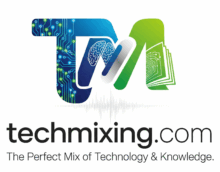🔹 What is Data Vault Modeling?
Data Vault Modeling is a data warehousing methodology designed to handle large volumes of historical data in a flexible, scalable, and auditable way.
It was developed by Dan Linstedt to solve challenges in modern enterprise data warehouses such as:
- Integrating data from multiple sources
- Tracking historical changes
- Supporting agility for evolving business needs
✅ Core Components of Data Vault
Data Vault splits data into three core table types:
- Hub
- Stores unique business keys with surrogate keys
- Example:
Customer_Hub→CustomerID(business key)
- Link
- Stores relationships between hubs
- Example:
Customer_Order_Link→ connectsCustomer_HubandOrder_Hub
- Satellite
- Stores descriptive attributes and historical changes for hubs or links
- Example:
Customer_Satellite→ Name, Address, StartDate, EndDate
Diagram Concept:
Customer_Hub --- Customer_Satellite
\
\---- Customer_Order_Link ---- Order_Hub --- Order_Satellite
🔹 Benefits of Data Vault
- Auditable & Traceable – Keeps full historical data
- Highly Scalable – Suited for big data & cloud DW
- Flexible & Agile – Easier to add new sources without redesign
- Separation of Concerns – Keys (hubs), relationships (links), attributes (satellites)
🔹 Drawbacks of Data Vault
- Complexity – Requires multiple joins for reporting
- Not optimized for direct BI queries – Usually needs a presentation layer (star schemas)
- More storage overhead due to multiple satellites and links
🔹 What is Dimensional Modeling?
Dimensional Modeling (popularized by Ralph Kimball) focuses on designing data warehouses for reporting and analytics using:
- Fact Tables – Store measurable data (sales, revenue, counts)
- Dimension Tables – Store descriptive attributes (customer, product, region)
- Star/Snowflake Schemas – Simplify BI queries and aggregations
Example:
SalesFact (DateKey, CustomerKey, ProductKey, Amount)
CustomerDim (CustomerKey, Name, Region)
ProductDim (ProductKey, Name, Category)
DateDim (DateKey, Day, Month, Year)
✅ Benefits of Dimensional Modeling
- Simpler for BI/OLAP reporting
- Easy for business users to understand
- Fast aggregations with star schemas
- Mature approach for dashboards & reports
🔹 Drawbacks of Dimensional Modeling
- Rigid – Adding new sources or attributes may require redesign
- Historical tracking is typically handled via SCD (Slowly Changing Dimensions)
- Not ideal for very large, complex, or frequently changing source systems
🔹 Key Differences: Data Vault vs. Dimensional Modeling
| Feature | Data Vault Modeling | Dimensional Modeling |
|---|---|---|
| Purpose | Data integration & historical storage | BI & analytics (presentation) |
| Focus | Raw, historical, auditable data | Clean, aggregated, report-ready data |
| Core Objects | Hubs, Links, Satellites | Facts and Dimensions |
| Historical Tracking | Built-in via Satellites | Handled via SCDs |
| Scalability | High – designed for big data | Moderate – grows complex over time |
| Agility | Flexible for schema evolution | Rigid once star schema is fixed |
| Complexity | Higher (needs many joins) | Lower (simpler queries) |
| BI Consumption | Needs staging to star schema for BI | Directly BI-friendly |
🔹 How They Work Together
In modern data warehouse architecture:
- Data Vault is used in the raw data warehouse layer for:
- Storing all historical data
- Integrating multiple source systems
- Preserving audit and lineage
- Dimensional Models (Star Schemas) are created in the presentation layer for:
- Reporting and analytics
- Power BI/Tableau dashboards
- Easy-to-understand KPIs
🔹 Real-World Example
Scenario: Retail chain wants to analyze historical sales and customer behavior
- Data Vault Layer:
Customer_Hub→ Stores unique CustomerIDOrder_Hub→ Stores OrderIDCustomer_Order_Link→ Connects customer and orderCustomer_Satellite→ Stores name, address changes with timestampsOrder_Satellite→ Stores order details and status history
- Dimensional Layer:
SalesFact(joins customer, product, and date)CustomerDim(flattened from Customer Hub & Satellite)ProductDim(from Product Hub & Satellite)
✅ Which One Should You Choose?
The choice between Dimensional Modeling and Data Vault Modeling often depends on your organization’s priorities.
- If your primary goal is to build a fast, easy-to-use data mart for business users to run reports and perform analysis, Dimensional Modeling is an excellent choice.
- If you need to build a robust, scalable, and auditable enterprise data warehouse that can handle a high volume of data from diverse and changing sources, Data Vault Modeling is likely the better option.
✅ Summary
- Data Vault Modeling → Ideal for data integration, historical tracking, and agility in large enterprise DWs.
- Dimensional Modeling → Ideal for BI reporting and analytics.
- Modern Approach → Use Data Vault for the raw/EDW layer, and dimensional models for the presentation layer.
Discover more from Technology with Vivek Johari
Subscribe to get the latest posts sent to your email.



